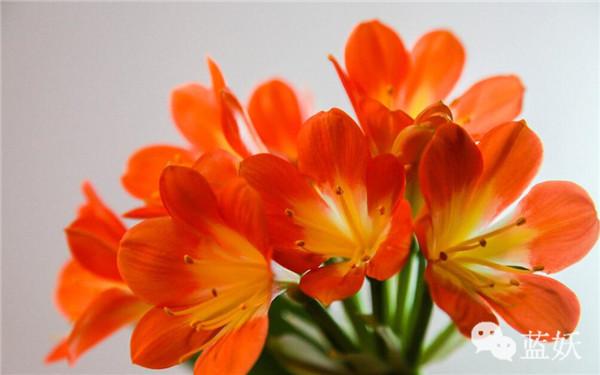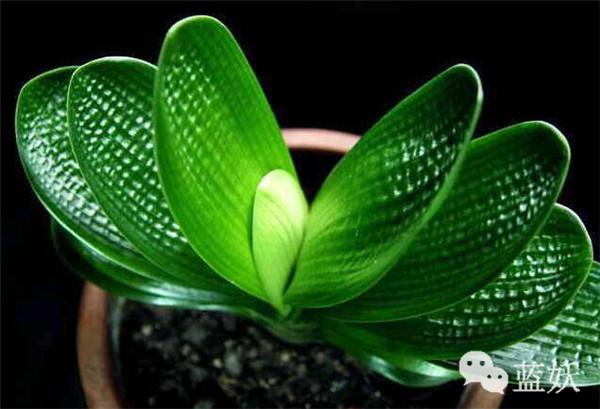Eight main points of culture methods of Cymbidium
abstract
Clivia originated in southern South Africa, is a perennial herb, flowering up to 30-50 days, mainly in winter and spring, New Year's Day to Spring Festival before and after flowering, avoid strong light, semi-shade plants, like cool, avoid high temperature, growth temperature of 15-25℃, below 5℃ will stop growing, like hypertrophy, good drainage soil and wet soil, avoid dry environment, has a high ornamental value.

8 main points of Clivia cultivation method
I. Soil
Clivia suitable for use with humus-rich soil, this soil permeability is good, water permeability is good, and fertile soil, with slightly acidic (pH6.5).
Cultivated soil formula: 1, humus soil 65%, clean sand 20%, fine furnace ash 15% mixed relative humidity of about 40%.
2. 6 parts of decaying leaf soil, 2 parts of pine needles, 1 part of river sand or furnace ash, 1 part of base fertilizer (pockmarks, etc.).

II. Illumination:
Clivia likes semi-shade, and leaves have phototaxis. If it is kept indoors for a long time, the leaves must be deflected in the direction of the sun, so it is necessary to turn the pot every week to ensure that the plant does not grow.

III. Watering
To Clivia watering can generally be selected in the following order: live water, magnetized water, natural precipitation, well water, tap water.
Clivia is a fleshy root, afraid of water damage. In addition, Clivia leaves have waxy layer, winter temperature is low, water transpiration, evaporation less. Therefore, watering should not be too much, just combine fertilization and watering to keep the pot soil moist. The soil should not be too dry or too wet, every watering must be watered thoroughly, after the bud is watered more.

Can be every 20 days or so, combined with watering a fermentation of bean cake water, light fishy water and horseshoe water, watering and fertilization combined. When the room temperature is low, control watering to prevent the pot soil from being too wet. If the pot soil is too wet, it will cause the root rot of the plant to die, but it cannot make the pot soil too dry.

IV. Fertilization
Clivia like fertilizer, but too much fertilizer will cause rotten roots, in addition to applying fertilizer, additional appropriate to use "thin fertilizer and more" method. Apply base fertilizer when changing pots. Fermented solid fertilizer is applied every other month in spring and autumn, and liquid fertilizer is applied once a week. It is best not to apply topdressing in winter and summer. The whole plant can grow slowly by relying on nutrients accumulated in spring and autumn.

When applying solid fertilizer, dig open the basin soil and bury it 2 cm deep in the soil. Do not directly contact the root system to avoid burns;
When applying liquid fertilizer, it is better for young seedlings to use fertilizer: water =1:40, and for large and medium seedlings to use 1:20. The time of fertilization is appropriate in the early morning. Avoid splashing on the leaves. After applying liquid fertilizer, water should be watered once in time but not much water. On the one hand, the fertilizer will be dissolved. On the other hand, the newly grown fleshy roots can be washed to prevent damage to the new roots.
Different seasons, fertilizer types have some emphasis. Winter, spring partial application of phosphorus, potassium fertilizer, such as bone meal, etc.; autumn partial application of nitrogen fertilizer, such as bean cake water; summer common root topdressing, with 0.1% potassium dihydrogen phosphate or calcium superphosphate spraying leaves, root topdressing can be carried out all year round.
V. Temperature
Temperature: Clivia in winter growth suitable temperature is 15-20℃, preferably not lower than 10℃. The temperature should be kept at about 18 ° C after the arrow, and the temperature difference between day and night is preferably about 10 ° C, otherwise the flower arrow will bloom if it does not grow to an appropriate height, and it is easy to form a "clip arrow".
When the outdoor temperature is lower than 10℃ at night, clivia should be moved indoors. When the indoor temperature is lower than 10℃, in addition to covering a layer of charcoal powder 1 cm thick on the surface of the pot soil for insulation, the flowerpot should be placed in the indoor sunny warm place. When the indoor temperature is particularly low, the film can be covered on the flowerpot to raise the temperature, but the temperature inside the cover should not exceed 25 ° C. If it exceeds, it should be ventilated and cooled in time.
VI. Time for changing pots
The time and frequency of changing soil depends on the size and season of seedlings.
Adult clivia need to change soil once a year. The best time to change soil is in spring and autumn, because clivia grows vigorously at this time, and it will not affect the growth of plants due to soil change.
Take out Clivia from the pot, cut off rotten roots and old roots without absorption ability, and remove waste soil. Spray disinfectant inside and outside leaves. Then fill 2-5 cm thick nutrient soil into the pot, grab a handful of soil to add solid roots, then put the plants in the pot, fill nutrient soil into the pot to half the height of the pot, gently press down along the edge of the pot, so that the roots stand in the pot, not easy to bend.
The key to soil replacement is to make the roots firm with soil. Otherwise, there is no soil at the root, and moisture and nutrients cannot reach the root, which is easy to cause rotten roots and arrows. After changing the nutrient soil, water can be poured.
VII. Prolonging florescence
Prolonged flowering: Clivia flowering mostly from December to March of the following year. The method of prolonging flowering is to place the flowers in a dark place when they are about to bloom, properly control watering, and keep the temperature at 8-12℃. In this way, flowering can be extended by 10-20 days.
VIII. Leaf protection
Leaves short, wide, thick, green, bright, very healthy Clivia characteristics. In addition to providing reasonable fertilizer and water, leaves must be kept clean to improve photosynthetic efficiency. One is to wash leaves regularly, spray clean water with the same room temperature or wipe off dust on leaves; the other is to spray fungicides in time to prevent leaf spot disease, leaf blight and stem rot and ensure green leaves.
If this article is useful to you, please share it with your circle of friends or Qzone!
Welcome to pay attention to Blue Demon Weixin Official Accounts and communicate one-on-one with Blue Demon!
Micro signal ilanyao (← long press copy)
If you have any flower cultivation problems, leave me a message on WeChat and we will discuss them together!
- Prev

Migrant workers return to their hometown to raise pheasants to get rich.
Since graduating from junior high school, I have been working abroad all the year round, working for about 3000 yuan a month in a small-scale factory in Guangdong for 8 hours. Year after year, year after year
- Next

Seven main points of culture of Guanyinlian
The succulent plant of the genus Avalokitella, also known as the long-growing grass, Guanyin lotus, and Buddha lotus. Originated in Spain, France, Italy and other European countries.
Related
- On the eggshell is a badge full of pride. British Poultry Egg Market and Consumer observation
- British study: 72% of Britons are willing to buy native eggs raised by insects
- Guidelines for friendly egg production revised the increase of space in chicken sheds can not be forced to change feathers and lay eggs.
- Risk of delay in customs clearance Australia suspends lobster exports to China
- Pig semen-the Vector of virus Transmission (4)
- Pig semen-the Vector of virus Transmission (3)
- Five common causes of difficult control of classical swine fever in clinic and their countermeasures
- Foot-and-mouth disease is the most effective way to prevent it!
- PED is the number one killer of piglets and has to be guarded against in autumn and winter.
- What is "yellow fat pig"? Have you ever heard the pig collector talk about "yellow fat pig"?

